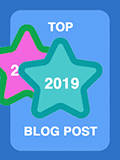Scrum as a basis for “New Learning”
Finally, one of the lecturers summed up the challenge for today’s teachers with the question: Is a high school diploma in today’s style still contemporary, in which the acquired knowledge of 2-3 years is reproduced in individual performance?
The average lifetime of knowledge today is only 3 years, i.e. the knowledge tested in the German Abitur examination is irrelevant at the same time if it does not have future points of reference. Much more critical for success than the “Know-what” is
- teamwork, cooperation and (iterative) adaptability to an ever faster changing environment (through globalisation and competition).
- the ability to learn lifelong in order to adapt to the ever faster cycles of change and to filter out from the ever more complex data structures the information that is “good to know” in the specific context.
It is therefore the “know-how” that counts.
Innovation/learning through combination and cooperation
In today’s knowledge society, it is obvious to all of us that it is not possible to learn or be able to do everything ourselves (at the speed at which new processes, organisational forms, apps and software emerge), but rather to network with others, bundle competencies and know where to get information or support from. Whenever people collaborate, exchange ideas and create something new together, positive energy and a breeding ground for intrinsic motivation emerge. Basically, the system always works when all participants are open to the idea of “sharing knowledge is power”. If every participant has the opportunity to establish himself as a competence bearer in certain situations, then something new and innovative emerges that brings the group and each individual forward.
In organisations, this includes the recognition that a competence-oriented cooperation works best without hierarchy, because then the hierarchical position no longer stands in the way of the appreciation of the competences of others. At school this includes an appreciative handling of the competences of the (in the conventional sense) worse pupils.
Appreciation in the Scrum team / need for solidarity
Exactly this idea is also in the Scrum framework: Courage, openness, respect, trust and commitment are the relevant values at Scrum, which all together convey the relevance of appreciation. If this happens authentically, teamwork works well, because we humans were born with a natural need for solidarity. We want to feel part of it and be a part of something bigger. Such a connection “shower” at regular intervals is also immanent for a healthy brain development, as we know today from brain research [Ebeling, Martin (13.01.18)].
For our perception not only the current communication / interaction is relevant, but also the previous socialisation and the experiences [Luhmann, N. (1984)] of the individuals, because only on the basis of their raster of meaning can individuals communicate. We adults are preburdened in this respect. We have learned to act cautiously and to always count on an opportunist in teams, or we feel the implicit hierarchy that exists in the (scrum) team despite all lip service. One reason why concepts such as WorkingOutLoud (#WOL) have such a strong attraction today is the authentic solidarity shower without risk.
Young people, on the other hand, have not yet had so many formative experiences and are still able to adapt quickly to the new framework due to their pronounced fluid intelligence.
Scrum as learning framework
The young adults become active themselves on the basis of Scrum, set their goals and work hands-on in self-organised teams. The learners are actively involved in the process and contribute their development competence. The teachers only act as development arrangers for the first steps. They create a learning stimulating environment with a portion of pedagogical composure and humour. For example, in #EDUSCRUM, developed by Willy Wijnands, the definition of Done is supplemented by a definition of fun, and the events Sprint Review and Sprint Retrospective are always carried out within the framework of a sprint (here a teaching unit) at the end of an achieved learning section, almost like a mini sprint. The teacher assumes the role of the product owner and determines which components of the product backlog (syllabus) are transferred to the sprint backlog. In addition, the teacher supports the team development of the student teams as a kind of Scrum Master. In addition, there is the role of the Scrum Master in the respective student teams who, with the help of the teacher, gradually learn to support the team members in such a way that they internalise the values such as courage, openness, respect, focus and commitment. In the long run, continuous and participative processes are developed in this way, which support the qualification and competence development integrated in the work process.
“New learning” with digital media
The current JIM study from 2017 shows that 97% of 12-19 year olds have their own smartphone and use the Internet, listen to music or watch videos on a daily basis. According to the study, they also use the Internet for about 45 minutes a day to obtain information for their homework [JIM study (2017)]. This quite high value of the use of private systems is related to the inadequate equipment of schools, which in Germany is only 11.5 to 1, i.e. 12 pupils share a computer. In addition, only a small proportion of teachers use digital media, surprisingly least in the mathematical field with 29% [Bos et al (2014)].
In the logic of Ruben Puentedura’s SAMR model [Puentedura (2006 & 2012)], substitution or augmentation is often the only alternative. Instead of the improvement of the learning setting, a transformation by modification or redefinition occurs only very rarely. An example: A work package is offered on a digital medium (S) and the written text is enriched and thus improved by linked audio and video files (A). It is redesigned when it is offered on a learning platform within the framework of a website (M) or when it is varied by one’s own selection or aligned to an individual goal (R).
If, however, the use of digital media is to lead to learning success, various studies (Hattie 2009, Herzig 2014 and OECD 2015) show that it is particularly important that the pupils themselves control the learning process and implement an optimised collaboration at eye level. This strengthens the feeling of solidarity and creates a “learning group” team identity. If, in addition, different learning channels (visual, auditory, haptic) are addressed, the learning success is all the more sustainable.
Once again, the focus is on what makes agility and especially Scrum stand out:
- self-organisation,
- Iterative adaption to environmental complexity (problem solving competence),
- collaboration at eye level,
- transparency, respect and esteem.
Conclusion
The bottom line remains: Scrum with the EDUScrum framework provides a very useful basis for “new learning” in many contexts. This also offers the advantage that this established framework has been extensively tested and proven. There are many well-functioning and lean processes and practices that can certainly be adapted for teaching. Nevertheless, even new learning only works, just like Scrum team work, if the values behind it are lived authentically and a corresponding mindset exists with one participant (including the teachers).
Notes (in German and English):
Bos et al. (2014): ILCILS 2013. Computer- und informationsbezogene Kompetenzen von Schülerinnen und Schülern in der 8. Jahrgangsstufe im internationalen Vergleich. Münster: Waxmann Hattie, John (2009): Visible Learning. A synthesis of over 800 meta-analyses relating to achievement. New York: Routledge
Herzig, Bardo (2014): Wie wirksam sind digitale Medien im Unterricht? Bielefeld: Bertelsmann Stiftung. https://www.theschooloflife.com/berlin/blog/selbstliebe-und-verbundenheit-mit-anderen-interview-mit-dr-martin-ebeling/
Luhmann, N. (1984) Soziale Systeme: Grundriss einer allgemeinen Theorie. Frankfurt (Main): Suhrkamp Medienpädagogischer Forschungsverbund Südwest (2017): JIM-Studie. Stuttgart: MPFS
OECD (2015): Students, Computers and Learning. Making the connection. PISA, OECD Publishing Puentedura, Ruben R.: Transformation, Technology, and Education (2006). http://hippasus.com/resources/tte/ (abgerufen am 07.01.19) sowie Puentedura, Ruben R.: Focus: Redefinition (18.06.2012).
Barbara Hilgert has published additional articles in the t2informatik Blog, including

Barbara Hilgert
Barbara Hilgert lives between Hamburg and Lübeck and works in Berlin. She is an agile coach, advises small and medium-sized companies on the topics of compatibility 4.0 and digital transformation and has a lot of know-how in the areas of team development and (New) Learning. “Sharing knowledge is power” is not only her life maxim, the development of this mindset is also the goal of her consultations and qualifications: Training is one of the core competencies for the future of work and an important prerequisite for collaborative networking and “new learning”.



